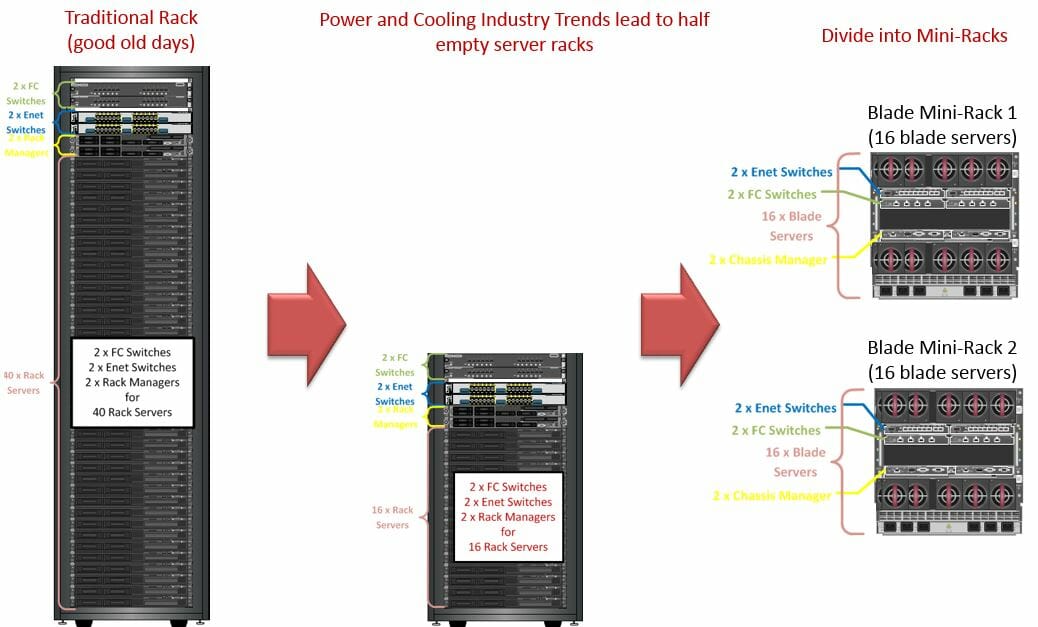How Converged Infrastructure is Impacting Your Cooling9 min read

The structure and makeup of your rack and data center infrastructure has changed dramatically. We now have different types of workloads handling some of the most advanced applications out there. Here’s the important piece to understand – all of this traffic and data center demand will only continue to grow.
Consider the following from Cisco’s latest Cisco Global Cloud Index:
- Quantitatively, the impact of cloud computing on data center traffic is clear. It is important to recognize that most Internet traffic has originated or terminated in a data center since 2008.
- Data center traffic will continue to dominate Internet traffic for the foreseeable future, but the nature of data center traffic is undergoing a fundamental transformation brought about by cloud applications, services, and infrastructure.
- The importance and relevance of the global cloud evolution is highlighted by one of the top-line projections from this updated forecast: By 2017 sixty-nine percent, or over two-thirds of data center traffic, will be cloud traffic.
The modern cloud heavily revolves around virtualization and modern data center technologies. Converged infrastructure systems aren’t only allowing for greater virtual platform controls – they’re virtualizing the entire converged system in general. By creating intelligent service and hardware profiles – organizations are able to create “follow the sun” data center models. This means that a service profile can, automatically, re-provision a set of blades or chassis to support users on a different side of the world.
Sounds pretty amazing right? Well – let’s slow down for a second and look at how the data center has evolved. Take a look at the image below:
Traditionally, we had racks and racks of servers and gear. However, in many cases, this gear wasn’t really being utilized properly. THIs means that we had inefficient rack cooling methodologies and we were wasting resources. Now – we have powerful converged “mini-racks” capable of advanced consolidation and high levels of user-density.
This is all fantastic for virtual systems, cloud computing, and even the end-users. But how does this impact your data center?
- Smaller doesn’t mean less cooling. This was a big misconception initially. Converged infrastructure does create a smaller footprint in the rack – but that doesn’t mean it needs any less cooling. A converged platform like a blade or unified fabric infrastructure needs quite a bit of power and cooling to stay efficient. We’re saving on space and management. All the while – environmental control still remains critical. In deploying converged systems – make sure you clearly understand power as well as cooling requirements.
- User, server, workload densities are all increasing. This is something to think about. Converged systems are becoming the norm for data center deployments, branch locations, and colocation data centers. These platforms are increasing user densities and allowing for more workloads to run on a single system. Here’s the important piece – plan ahead. Your blade chassis might only be half full now, but is your rack ready to cool a full deployment? As more users come into your system, make sure to plan ahead to have cooling capacity ready for your growing converged platform.
- Become proactive in your cooling methodology. Cooling is not a “set it and forget it” type of deployment. The modern data center is an ever-changing puzzle with constantly moving hardware components. This means your cooling and environmental control methodology will need to evolve as well. Constantly evaluate your own environment to make sure you have enough cooling capacity for today and the near future. In fact, many organizations schedule regular cooling capacity assessments as their business grows.
Cooling your data center isn’t a one-button operation. In fact there are entire cooling science seminars which can help your organization better understand that demands of a modern data center. Moving forward – cloud computing and mobility are all going to impact the kinds of workloads living within a data center platform. This means your organization will need to dynamically adapt to ever-changing cooling and data center control demands. To stay proactive – monitor your cooling platform and always deploy flexible, best-in-class, data center cooling technologies.

Airflow Management Awareness Month
Free Informative webinars every Tuesday in June.








0 Comments